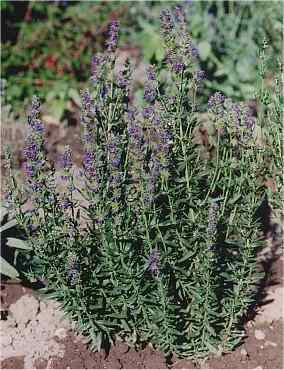 Hyssop
is an attractive
perennial herb that makes a nice border
or edging. It is cultivated mostly for medicinal purposes, but the
leaves can be used sparingly in green salads, marinades and stews.
The flowers can be blue, red, or white, depending on the type.
Hyssop
is an attractive
perennial herb that makes a nice border
or edging. It is cultivated mostly for medicinal purposes, but the
leaves can be used sparingly in green salads, marinades and stews.
The flowers can be blue, red, or white, depending on the type.
Because of its strong, camphor-like smell, Hyssop is known mainly as a cleansing
herb. Interestingly, the name is mentioned in the Bible, but it is
not clear whether or not this is the same plant we see today. However,
the volatile oil of Hyssop is used today as a key ingredient in some
liquors, including Benedictine and Chartreuse.
The leaves and flowers of Hyssop have a licorice-minty taste, and indeed
this plant is related to the
Mints. The leaves
and seeds can be used to flavor green salads, poultry stuffings (with sage),
chicken soup, and can be dried for use in teas.
Hyssop germinates rapidly and adapts readily to being grown in containers.
It prefers warm and rather dry soil. After flowering, it should be
cut back to ground level in the fall. It can be started from seed,
cuttings, or division. Prune occasionally to remove flower heads.
Harvest only green plant matter, because woody parts have little characteristic
oil. Bees, butterflies, and hummingbirds love this plant, and this
alone makes it a valuable addition to the herb garden. It also has
merit as a companion plant for other herbs and vegetables. Please
see Companion
Planting for more information. Hang bunches upside down in a warm, dry
place and store the dried plant in tightly covered containers.
 Hyssop
is an attractive
Hyssop
is an attractive